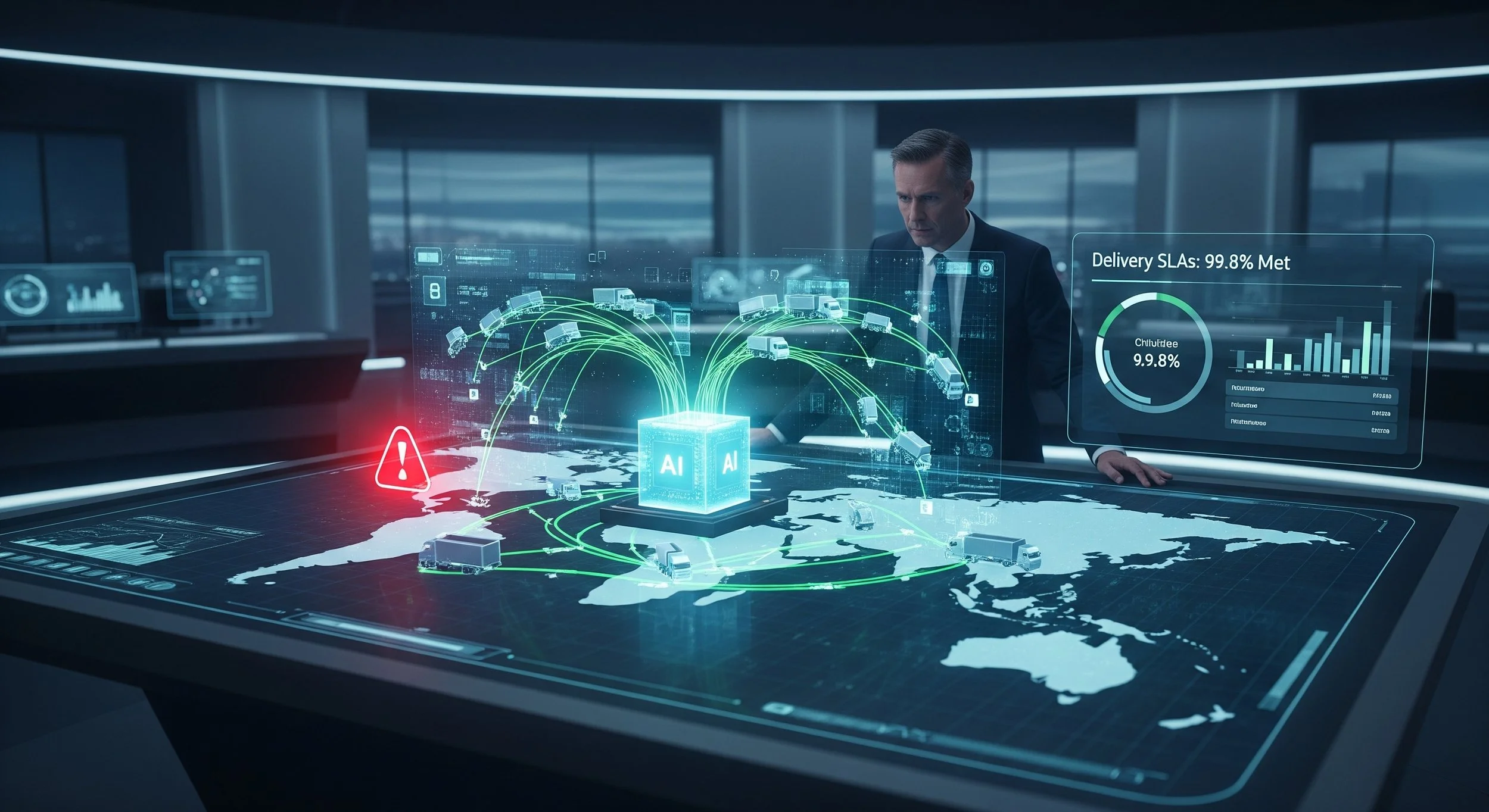Would You Trust AI Over Gut Instinct? 75% of Supply Chain Leaders Already Do.
Introduction: Instinct Isn’t Enough Anymore
Gut instinct once ruled supply chain decision-making. But in 2025, disruption moves too fast, customer expectations run too high, and global risks are too unpredictable to rely on hunches alone.
That’s why 75% of supply chain leaders now trust AI over gut instinct for critical decisions.
With AI and real-time data, forward-looking CIOs and CTOs are building supply chains that don’t just survive the next disruption—they predict it, adapt to it, and thrive through it.
💡 “AI in the supply chain isn’t just about efficiency—it’s about survival. In a world where disruption is the norm, only the agile and resilient will thrive.”
Why Supply Chain Resilience Is Now a Business Imperative
Recent global events have shattered old models:
Port congestion, labor strikes, and shipping delays
Climate-related disasters shutting down production
Regional conflicts cutting off key suppliers
Consumer demand swings making static forecasting obsolete
In this volatile climate, resilience has become the new ROI. Companies that adopted AI-powered, transparent supply chains during recent disruptions outperformed their peers in both customer retention and revenue.
AI: The Nervous System of Resilient Supply Chains
AI is now acting as the central intelligence layer for supply chain operations:
Accurate Forecasting
Businesses using AI have cut forecast errors by up to 50%, reducing overstock, lost sales, and planning volatility.Disruption Anticipation
Machine learning models flag at-risk suppliers, routes, or regions days before human teams are even aware.Digital Twin Simulations
Run “what-if” scenarios before real-world shocks hit—from supplier shutdowns to geopolitical flare-ups.Smart Quality Control
82% of supply chain orgs use AI to reduce product defects by 18%, directly cutting returns and increasing satisfaction.Efficiency Boosters
Early adopters have seen a 15% drop in logistics costs and a 35% decrease in inventory levels, freeing up working capital.
📉 “AI-powered supply chains: Where a 65% drop in lost sales isn’t a dream—it’s today’s reality.”
Real-Time Data: The Fuel Behind Every Fast Decision
Without unified, live data, AI is flying blind. The most resilient supply chains are powered by:
IoT sensors tracking inventory and equipment
Telematics + fleet data from transportation systems
Live supplier feeds via EDI and API
Central dashboards fusing ERP, WMS, TMS, and commerce systems
⚠️ “Siloed, lagging data is the Achilles’ heel of supply chain agility.”
Transparency = Resilience
Supply chain fragility is directly tied to lack of visibility. AI amplifies transparency—giving you:
Instant risk alerts
Real-time collaboration with suppliers
Agile responses to last-mile issues
The payoff? A 65% improvement in service levels, according to industry benchmarks.
The CIO/CTO Playbook: Tech Foundations for Resilience
To operationalize AI and real-time data at scale, leaders must invest in:
Cloud-native architecture for speed and scalability
Unified data layers that break silos
MLOps pipelines to continuously improve model accuracy
Built-in cybersecurity for uninterrupted uptime during crises
AI-Driven Culture: Resilience Is Built, Not Bought
Technology alone isn’t enough. The most adaptive supply chains are supported by:
Cross-functional teams with shared KPIs
Empowered local decision-makers
Upskilled employees in data and AI fluency
Culture shifts from reactive firefighting to proactive foresight
🔁 From crisis management to constant prediction—that’s the AI-powered mindset.
What It Looks Like in Action
An AI model flags geopolitical risk in a supplier’s region
Simulations forecast inventory and delivery impact
Alternative sourcing is activated
Logistics are dynamically re-routed
Customer SLAs are maintained, even during crisis
That’s resilience in motion—driven by AI, fueled by real-time data, and executed at machine speed.
Getting Started: Your Roadmap to AI-Powered Resilience
Audit your current visibility
Where are the blind spots in your supply chain?Prioritize high-impact AI use cases
Start with forecasting, supplier risk, and logistics optimization.Unify your tech stack
Connect ERP, WMS, TMS, and partner systems with a real-time data layer.Simulate your next disruption
Use AI-driven digital twins to build strategic readiness.Train your teams
Make data and AI literacy part of your operating culture.
Conclusion: Will You Still Trust Instinct—Or Let AI Lead?
The next shock isn’t a matter of “if”—it’s “when.”
Will your supply chain buckle under pressure—or bounce forward stronger?
Trusting AI isn’t a leap of faith anymore—it’s a leadership decision.
The data’s clear: Agile, AI-powered supply chains are outpacing the rest.
🧠 Would you trust AI over gut instinct? 75% of supply chain leaders already do. Now it’s your move.
Sources & Citations
Market Research Future: AI in Supply Chain Market Forecast (2023–2033)
McKinsey & Company: The Impact of AI on Forecast Accuracy and Inventory Efficiency
Gartner: AI-Driven Supply Chains Report
Deloitte: The Value of Supply Chain Transparency
BCG: Building Resilient Supply Chains with AI
Capgemini: Digital Twins and Scenario Simulation in Supply Chain Management
Harvard Business Review: From Firefighting to Foresight in the Supply Chain
Accenture: The CIO and CTO Guide to Next-Gen Supply Chains


